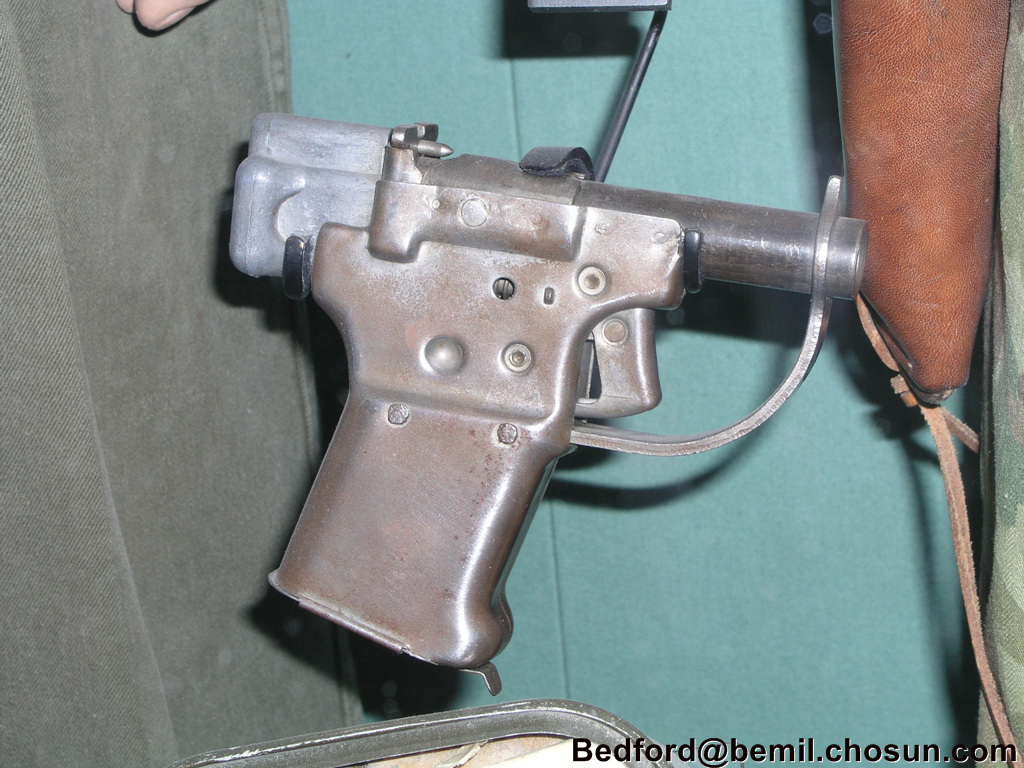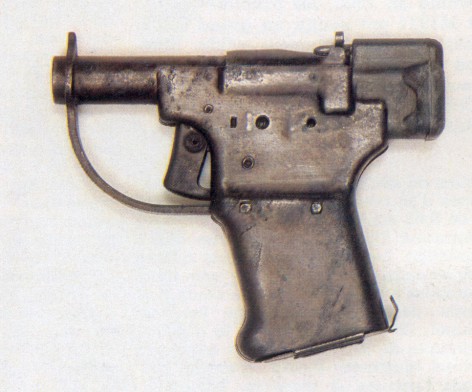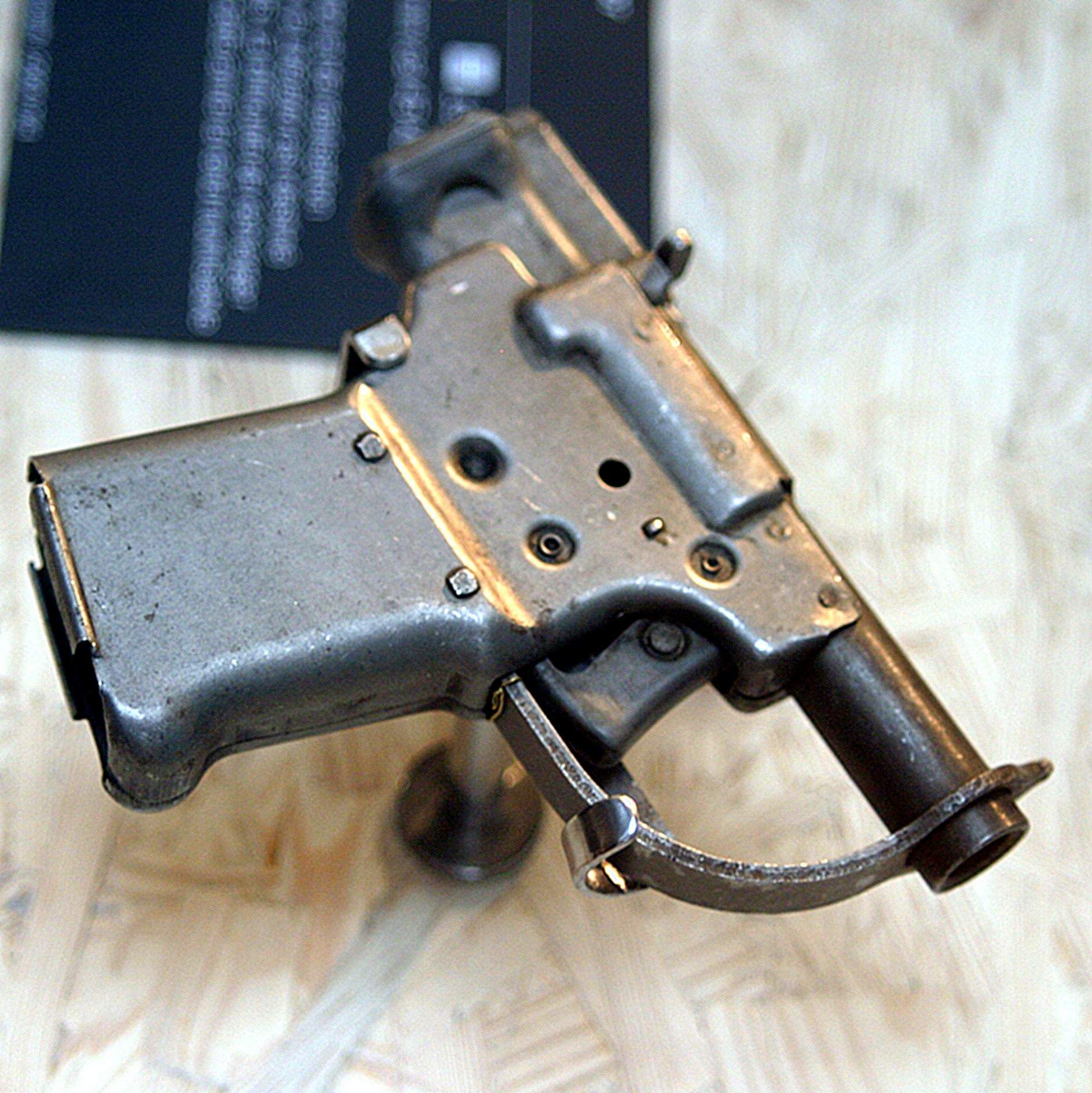FP-45 리버레이터 권총..
bedford1 | 2007-02-23 06:35:56
조회 6495 | 추천 0 | 다운로드 9
미국이 이차대전중 대량생산해서 독일 점령지역에 뿌렸던 권총입니다.
레지스탕스들이 사용하면서 독일 요인을 암살하도록 대량으로 투하했는데..지금은 소수만 남아있다고 합니다.
우리도 북한에 이런 물건을 뿌리면 어떨까 하는 생각도 해봤는데...이런 물건 뿌리면 당장은 유용할지 몰라도
통일이후엔 강도들이 들고 다니는 통에 골치아플겁니다. 아프가니스탄 게릴라에게 미국이 스팅거 지급했다가
나중에 골치아픈 경우를 당한것을 상기하시면 별로 짐작하기 어렵지 않을겁니다.
---------------------------------------------------------------------
The FP-45 Liberator was a pistol manufactured for the United States military during World War II.
The pistol was designed for the United States Army in 1942 by the Inland Guide Lamp Manufacturing Division of the General Motors Corporation in Dayton, Ohio. Interestingly, the army designated the weapon the Flare Projector Caliber .45 hence the designation FP-45. This was done to disguise the fact that a pistol was being mass produced. The original engineering drawings label the barrel as "tube", the trigger as "yoke", the firing pin as "control rod", and the trigger guard as "spanner". The Guide Lamp Division plant in Anderson, Indiana assembled a million of these weapons. The Liberator project took about 6 months from concept to end of production with about 11 weeks of actual manufacturing time, done by 300 workers.
The weapon was a crude, single shot pistol designed to be cheaply and quickly mass produced. The Liberator had just 23 parts. The weapon largely used stamped and turned steel parts that were cheap and easy to manufacture. The weapon fired a .45 caliber pistol cartridge from an unrifled barrel. Due to the unrifled barrel, maximum effective range was only about 25 feet (less than 8 meters). In reality, the actual effective range was closer to about 10 feet (3 meters). After that, the oblong .45 ACP bullet (designed for a rifled barrel) would begin to tumble out of control ("keyholing").
The Liberator was shipped in a cardboard box with 10 rounds of .45 ACP ammunition, a wooden dowel to remove the empty shell casing, and an instruction sheet showing how to load and fire the weapon. Excess rounds of ammunition could be stored in the pistol grip.
After production, the Army turned the Liberators over to the OSS. A crude and clumsy weapon, the Liberator was never intended for front line service. It was originally intended as an insurgency weapon to be mass dropped behind enemy lines to resistance fighters in occupied territory. The resistance fighters were to recover the weapons, sneak up on an Axis occupier, either kill him or knock him out and retrieve his weapon(s). Many resistance fighters called the FP-45 "a great weapon to get another one with".
The weapon was valued as much for its psychological warfare effect as its actual field performance. It was believed that if vast quantities of these weapons could be delivered into Axis occupied territory, it would have a devastating effect on the morale of occupying troops. The plan was to drop the weapon in such great quantities that occupying forces could never capture or recover all the weapons. It was hoped that the thought of thousands of these unrecovered weapons potentially in the hands of the citizens of occupied countries would have a deleterious effect on enemy morale.
In reality, the OSS never saw the practicality in mass dropping the Liberator over occupied Europe, and only a handful were ever distributed. Only the Chinese and resistance forces in the Philippines received the Liberator in any significant quantity. The Liberator was never issued to American or Allied troops and there is no known instance of the weapon ever actually being used in combat.
The original delivered cost for the FP-45 was $2.10/unit ($26 in 2005). A Liberator in good condition today can fetch approximately $2500, with the original box bringing an additional $1500, with an original extremely rare paper instruction sheet the value could exceed $4500 to a collector of World War II rare militaria.
An interesting fact about the Liberator is that the factories could produce one faster than the weapon could be loaded and fired. Building the pistol took about six or seven seconds whilst loading took about 10 seconds.
In Popular Culture
The FP-45 Liberator's design was featured in the 2004 PlayStation 2 game Metal Gear Solid 3: Snake Eater as a single-shot tranquilizer gun with a built-in suppressor and laser sight, dubbed the "EZ Gun". It was designed by the character Sigint and imitates the design of the Liberator because it "looks cool". However, the function of the pistol actually resembles that of the Russian [1] or [2] silent pistols, which used a special silent cartridge and had an integrated laser sight.
레지스탕스들이 사용하면서 독일 요인을 암살하도록 대량으로 투하했는데..지금은 소수만 남아있다고 합니다.
우리도 북한에 이런 물건을 뿌리면 어떨까 하는 생각도 해봤는데...이런 물건 뿌리면 당장은 유용할지 몰라도
통일이후엔 강도들이 들고 다니는 통에 골치아플겁니다. 아프가니스탄 게릴라에게 미국이 스팅거 지급했다가
나중에 골치아픈 경우를 당한것을 상기하시면 별로 짐작하기 어렵지 않을겁니다.
---------------------------------------------------------------------
The FP-45 Liberator was a pistol manufactured for the United States military during World War II.
The pistol was designed for the United States Army in 1942 by the Inland Guide Lamp Manufacturing Division of the General Motors Corporation in Dayton, Ohio. Interestingly, the army designated the weapon the Flare Projector Caliber .45 hence the designation FP-45. This was done to disguise the fact that a pistol was being mass produced. The original engineering drawings label the barrel as "tube", the trigger as "yoke", the firing pin as "control rod", and the trigger guard as "spanner". The Guide Lamp Division plant in Anderson, Indiana assembled a million of these weapons. The Liberator project took about 6 months from concept to end of production with about 11 weeks of actual manufacturing time, done by 300 workers.
The weapon was a crude, single shot pistol designed to be cheaply and quickly mass produced. The Liberator had just 23 parts. The weapon largely used stamped and turned steel parts that were cheap and easy to manufacture. The weapon fired a .45 caliber pistol cartridge from an unrifled barrel. Due to the unrifled barrel, maximum effective range was only about 25 feet (less than 8 meters). In reality, the actual effective range was closer to about 10 feet (3 meters). After that, the oblong .45 ACP bullet (designed for a rifled barrel) would begin to tumble out of control ("keyholing").
The Liberator was shipped in a cardboard box with 10 rounds of .45 ACP ammunition, a wooden dowel to remove the empty shell casing, and an instruction sheet showing how to load and fire the weapon. Excess rounds of ammunition could be stored in the pistol grip.
After production, the Army turned the Liberators over to the OSS. A crude and clumsy weapon, the Liberator was never intended for front line service. It was originally intended as an insurgency weapon to be mass dropped behind enemy lines to resistance fighters in occupied territory. The resistance fighters were to recover the weapons, sneak up on an Axis occupier, either kill him or knock him out and retrieve his weapon(s). Many resistance fighters called the FP-45 "a great weapon to get another one with".
The weapon was valued as much for its psychological warfare effect as its actual field performance. It was believed that if vast quantities of these weapons could be delivered into Axis occupied territory, it would have a devastating effect on the morale of occupying troops. The plan was to drop the weapon in such great quantities that occupying forces could never capture or recover all the weapons. It was hoped that the thought of thousands of these unrecovered weapons potentially in the hands of the citizens of occupied countries would have a deleterious effect on enemy morale.
In reality, the OSS never saw the practicality in mass dropping the Liberator over occupied Europe, and only a handful were ever distributed. Only the Chinese and resistance forces in the Philippines received the Liberator in any significant quantity. The Liberator was never issued to American or Allied troops and there is no known instance of the weapon ever actually being used in combat.
The original delivered cost for the FP-45 was $2.10/unit ($26 in 2005). A Liberator in good condition today can fetch approximately $2500, with the original box bringing an additional $1500, with an original extremely rare paper instruction sheet the value could exceed $4500 to a collector of World War II rare militaria.
An interesting fact about the Liberator is that the factories could produce one faster than the weapon could be loaded and fired. Building the pistol took about six or seven seconds whilst loading took about 10 seconds.
In Popular Culture
The FP-45 Liberator's design was featured in the 2004 PlayStation 2 game Metal Gear Solid 3: Snake Eater as a single-shot tranquilizer gun with a built-in suppressor and laser sight, dubbed the "EZ Gun". It was designed by the character Sigint and imitates the design of the Liberator because it "looks cool". However, the function of the pistol actually resembles that of the Russian [1] or [2] silent pistols, which used a special silent cartridge and had an integrated laser sight.








 1
1


댓글 [9]
알렉산드로프 | 2007-02-23 | 추천 0
스티븐 | 2007-02-23 | 추천 0
bedford1 | 2007-02-23 | 추천 0
bedford1 | 2007-02-23 | 추천 0
홍성준 | 2007-02-23 | 추천 0
bedford1 | 2007-02-23 | 추천 0
bedford1 | 2007-02-23 | 추천 0
hongyks | 2007-02-23 | 추천 0
knox | 2007-02-23 | 추천 0